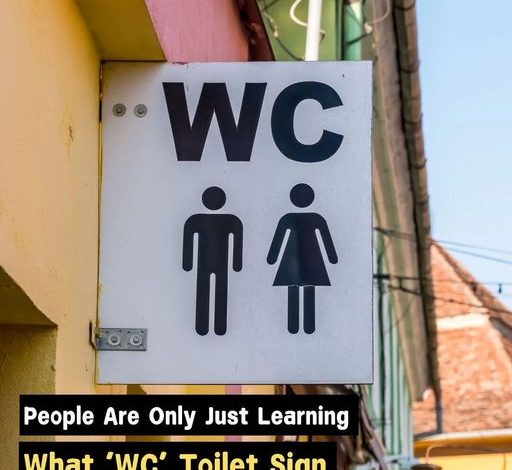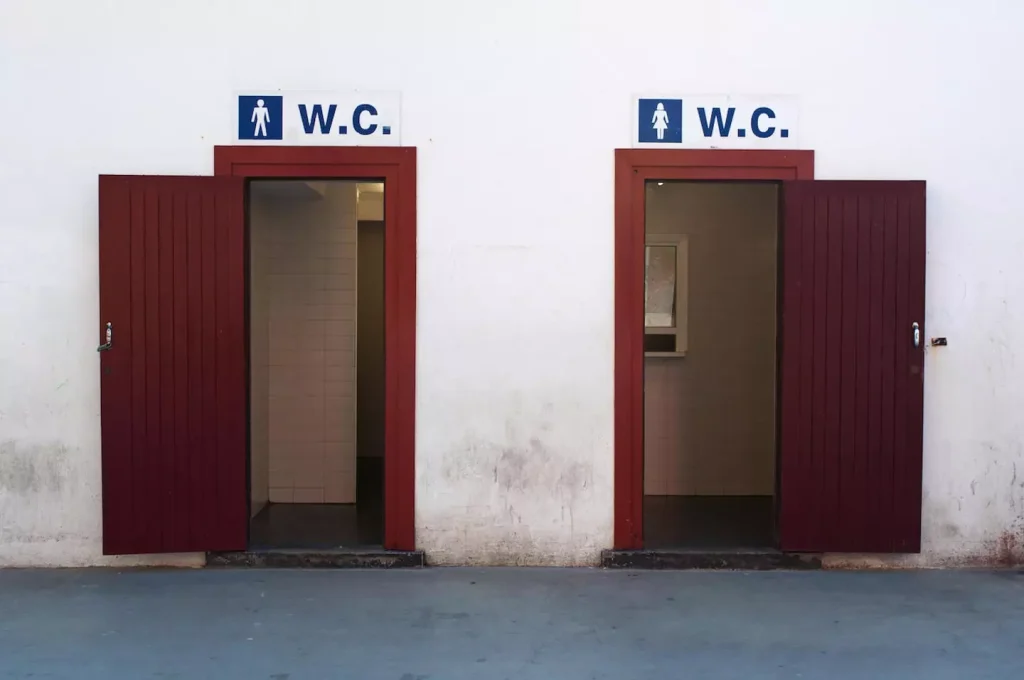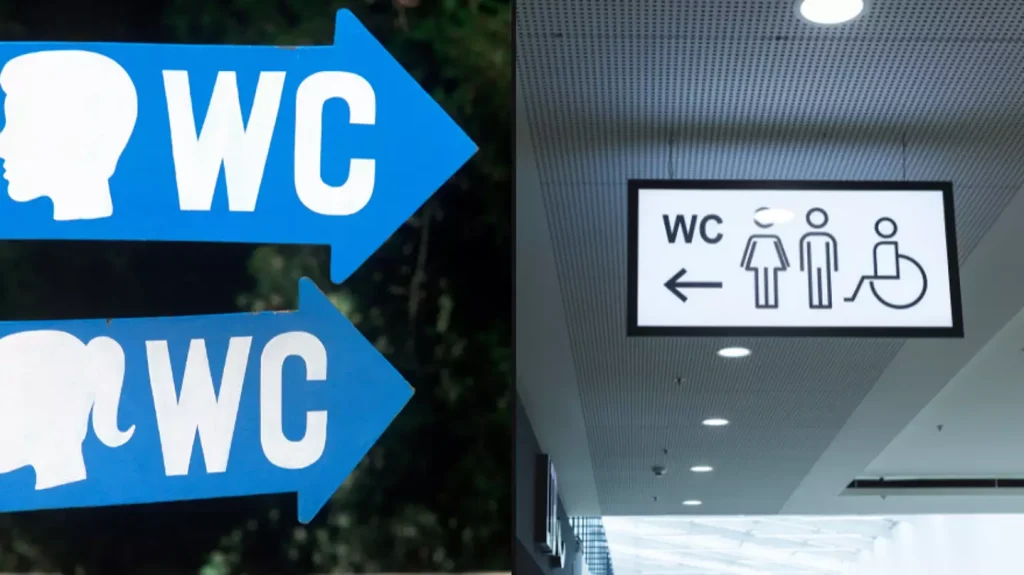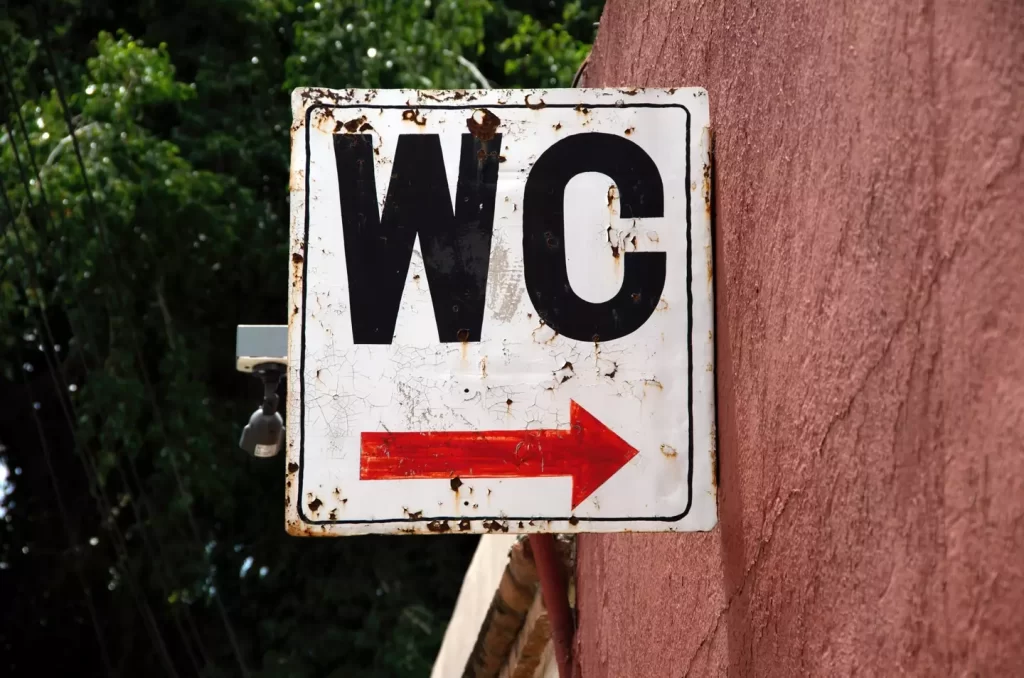
Have you ever found yourself in a public restroom and wondered what the mysterious letters “WC” on the door stand for? It’s one of those things many of us see but never really think about—until it piques our curiosity. We often refer to this space as the “bathroom,” “restroom,” or, if we’re feeling a bit more refined, the “lavatory.” But, what about “WC”? It turns out there’s a reason behind this seemingly cryptic abbreviation, and the history behind it might just surprise you!

Water Closet: The Mystery Behind WC
The term “WC” stands for “water closet,” an older expression dating back to the 19th century. Back in the day, the “bathroom” wasn’t where people went to relieve themselves; it was actually the place where they would take a bath. Similarly, the term “restroom” wasn’t always about relieving oneself either; it referred to a room where you could rest or prepare for the day, using the sink and mirror. But when it came to answering nature’s call, there was the “water closet.” This term was used to describe a dedicated space with a toilet—essentially a small room that kept the toilet separate from other bathroom activities.
This might sound a bit unusual to us today, but the water closet was a practical solution back in the day. It was essentially an early version of the modern toilet room, giving people a private, separate space to take care of their business. Over time, the term “water closet” faded from everyday use, but its abbreviation, “WC,” stuck around, especially in European countries. That’s why you’ll often see “WC” marked on bathroom doors, especially in places like restaurants, train stations, and other public areas.

It’s not just you—many others are equally puzzled by the “WC” sign. Take social media, for example. One user shared, “What do you mean WC stands for water closet?” while another admitted, “I was 23 years old when I learned that WC means water closet.” It seems that we aren’t alone in not fully grasping the meaning of this old-fashioned term, even though it’s been around for centuries.
So, the next time you’re walking down the hallway in a public place and you spot the “WC” sign on the door, you’ll now know that it’s a reminder of a time when taking care of your personal business was done in a small, private room called the water closet. It’s a piece of history that’s still with us today, even if we don’t use the term as much anymore.
The Unwritten Urinal Rule: A Hilarious Yet Unspoken Etiquette
Speaking of bathrooms, let’s dive into another amusing aspect of public restrooms—urinals. Have you ever been in a men’s restroom with a row of urinals and thought, “Where on earth do I stand?” Well, apparently, there’s an unwritten rule that every guy seems to follow without even thinking about it, and stand-up comedian Freddy Quinne recently went viral for pointing it out in a hilarious TikTok.
Freddy explains that when faced with a row of five empty urinals, the unspoken rule is to pick either the first one on the far left or the last one on the far right. Why? Well, it’s all about personal space. By choosing one of the two end urinals, you’re leaving a buffer zone between yourself and anyone else who comes in to use the rest of the row. This is seen as the most polite way to do your business in a public restroom without encroaching on someone’s space.

Now, if both end urinals are occupied, then, and only then, is it acceptable to move to the middle urinal—the third one in the row. But, according to Freddy, you should never use urinals two and four unless all the other spots are taken. It’s just not done. He says it’s all about ensuring that there’s enough distance between users, as it can feel awkward if you’re standing right next to someone when you have an empty urinal right next to you. This unwritten rule is so universally acknowledged that it’s practically a rite of passage for men using public restrooms.
It’s one of those funny, unsung aspects of bathroom culture that many of us just follow instinctively without even realizing there’s a “right” way to do it. The rule is clear: keep your distance, respect the space, and only go in the middle if absolutely necessary. Freddy’s take on this timeless etiquette has struck a chord with men everywhere, proving just how ingrained these bathroom conventions are.
The Changing Language of Public Restrooms
Language surrounding restrooms has evolved over time, and “WC” is just one example of how our terminology has shifted. In the past, people might have used terms like “lavatory,” “water closet,” or even “loo” in different parts of the world. These terms all referred to the same thing but were shaped by cultural and regional differences. For instance, in the UK, people commonly use “loo” to refer to the bathroom, while in the U.S., “bathroom” and “restroom” are the go-to terms. The shift towards using “bathroom” or “restroom” instead of “water closet” reflects changes in the way we think about these spaces—moving from a strictly utilitarian function to a more relaxed and social one. After all, we no longer just use the restroom to take care of our bodily needs but also to catch a breather or even check our phones while we’re at it.

This shift in language and culture shows just how much societal attitudes toward spaces like the bathroom have changed over time. What used to be a strictly functional, perhaps even slightly uncomfortable space, has evolved into a more neutral and even comforting place. It’s a place where we can feel a bit of solitude, a brief escape from the hustle and bustle of daily life, and a place where social norms, like Freddy Quinne’s urinal rules, keep things running smoothly.
So, next time you see that “WC” sign or find yourself navigating the subtle urinal rules in a public restroom, you’ll be armed with some fascinating history and etiquette. Whether you’re taking a moment to reflect in a “water closet” or adhering to the unspoken rules of urinal etiquette, it’s clear that the bathroom is far more than just a place to answer nature’s call—it’s a space filled with history, social customs, and, of course, a bit of humor along the way